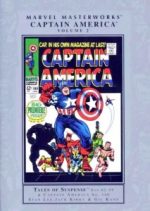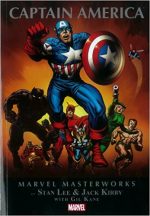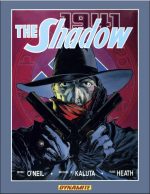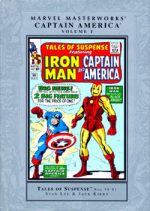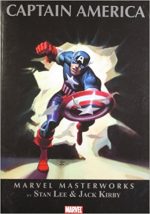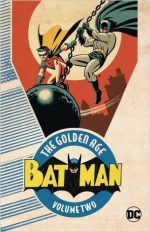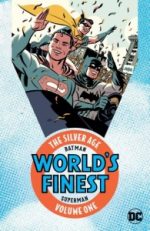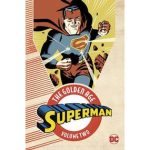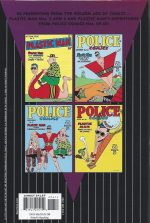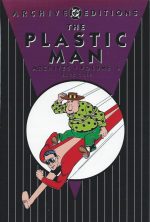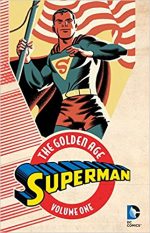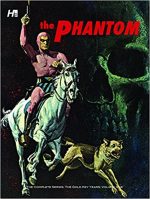
By Bill Harris & Bill Lignante with George Wilson (Hermes Press)
ISBN: 978-1-61345-005-5
In the 17th century a British sailor survived an attack by pirates, and, washing ashore in Africa, swore on the skull of his murdered father to dedicate his life and that of all his descendants to destroying all pirates and criminals. The Phantom fights crime and injustice from a base deep in the jungles of Bengali, and throughout Africa is known as the “Ghost Who Walksâ€.
His unchanging appearance ad unswerving quest for justice have led to him being considered an immortal avenger by the credulous and the wicked. Down the decades one hero after another has fought and died in an unbroken line, and the latest wearer of the mask, indistinguishable from the first, continues the never-ending battle…
Lee Falk created the Jungle Avenger at the request of his syndicate employers who were already making history, public headway and loads of money with his first strip sensation Mandrake the Magician…
Although technically not the first ever costumed hero in comics, The Phantom was the prototype paladin to wear a skin-tight body-stocking, and the first to have a mask with opaque eye-slits.
He debuted on February 17th 1936 in an extended sequence that pitted him against a global confederation of pirates called the Singh Brotherhood. Falk wrote and drew the daily strip for the first two weeks before handing artist Ray Moore the illustration side. The Sunday feature began in May 1939.
For such a successful, long-lived and influential series, in terms of compendia or graphic novel collections The Phantom has been very poorly served by the English language market. Various small companies have tried to collect the strips – one of the longest continually running adventure serials in publishing history – but in no systematic or chronological order and never with any sustained success.
But, even if it were only of historical value (or just printed for Australians, who have long been manic devotees of the implacable champion) surely “Kit Walker†is worthy of a definitive chronological compendium series?
Happily, his comic book adventures have fared slightly better – at least in recent times…
In the 1960’s King Features Syndicate dabbled with a comicbook line of their biggest stars – Flash Gordon, Mandrake and The Phantom – but immediately prior to that the Ghost Who Walks held a solo starring vehicle under the broad and effective aegis of veteran licensed properties publisher Gold Key Comics.
This superb full-cover hardcover (with equivalent eBook editions for the modern minded) gathers the first eight issues – encompassing November 1962 through August 1964 – and, as explained in fan and scholar Ed Rhoades’ Introduction ‘The Phantom and the Silver Age’, offers newspaper strip tales originally illustrated by Wilson McCoy that had been adapted by original scripter Bill Harris and drawn in comicbook format by Bill Lignante.
The Phantom was no stranger to funnybooks, having been featured since the Golden Age in titles such as Feature Book and Harvey Hits, but only as straight strip reprints. These Gold Key exploits were tailored to a big page and a young readership.
The fascinating history lesson is also augmented by pages of original artwork and ends much too soon for my elevated tastes, but if you’re a fan of pictorial adventure there’s plenty more to enjoy.
Each issue was fronted by a stunning painted cover by George Wilson and the excitement kicks off here with ‘The Game’ (Phantom #1, November 1962) as the international man of mystery encounters Prince Ragon Gil, whose idea of fun is to pit abducted or bribed strangers against ferocious beasts. When an interfering masked man closes down his warped games the eastern potentate swears vengeance and kidnaps the hero’s fiancé Diana Palmer. His plan is to force the interloper to play his savage game, but it’s his last mistake…
That premiere issue concludes with a single-page recap of the legend of The Phantom before #2 (February 1963) resumes the wonderment with ‘The Rattle’ as an exploit from The Phantom’s ancestral past flares up again after tiny bird-riding barbarians start stealing from the local tribes.
The current ghost must crack the casebooks of his forefathers and penetrate a most inhospitable region to get to the bottom of the mystery and bring peace back to the jungle…
A second story taps into contemporary Flying Saucer interest as our hero encounters aliens intent on conquest. Thankfully the purple-clad subject of ‘The Test’ proves sufficient to change their minds…
History’s greatest treasures are stored in The Phantom’s fabulous Skull Cave and the first tale in #3 (May 1963) relates how a rescued white man glimpses ‘The Diamond Cup’ of Alexander the Great and accidentally triggers a greed-fuelled crusade by eager criminals and ambitious chances before the Ghost Who Walks finally restores peace and order…
Rounding out the issue, ‘The Crybaby’ finds frail village boy Cecil given a crash course in confidence and exercise by the enigmatic masked man. The experience is literally life-changing…
In #4 (August) disgraced, fraud-perpetrating witchmen strike back against The Phantom through their manufactured deity ‘Oogooru’, only to be shown what real sleight of hand and prestidigitation can achieve, after which ocean voyager Kit Walker solves the enigma of vanishing villains the ‘Goggle-Eye Pirates’…
Two centuries previously The Phantom established a police force dubbed The Jungle Patrol with himself as its anonymous titular head. In #5 (October) those worthy stalwarts are almost outfoxed by a devious gang of bandits known as ‘The Swamp Rats’ until the unseen “Commander†takes personal charge of the mission. The big innovation of the issue is the premiere of a new episodic feature detailing ‘The Phantom’s Boyhood’ as a baby is born in the Skull Cave. Tracing the formative experiences of the current Phantom, the initial yarn follows little Kit from toddler to the dawn of adolescence when his parents regretfully decide it’s time to pack him off to private school in America…
The Phantom #6 (February 1964) leads with ‘The Lady from Nowhere’ as heiress Lydia Land is thrown from a plane and rescued by the masked manhunter. Soon he’s dogging her steps to track down which trusted associate is trying to silence her and steal her fortune…
A life-changing meeting shapes the destiny of the hero-to-be in ‘The Phantom’s Boyhood Part II – Diana’ as Kit falls for the girl next door and makes his mark amongst the cads and bullies of the civilised world…
The peaceful villages of the jungle are thrown into turmoil by the thieving depredations of ‘The Super Apes’ (#7, May) until the Jungle Patrol and The Phantom expose their shocking secret whilst ‘The Phantom’s Boyhood Part III – School’ finds the African émigré making his mark in the classroom, on the playing fields and in the newspapers…
Phantom #8 (August) closes this initial outing with an epic extra-length tale of vengeance as the current Ghost Who Walks finally tracks down ‘The Belt’ and the villain who killed his father and stole it…
Straightforward, captivating rollicking action-adventure has always been the staple of The Phantom. If that sounds like a good time to you, this is a traditional nostalgia-fest you won’t want to miss…
The Phantom® © 1962-1964 and 2011 King Features Syndicate, Inc. ® Hearst Holdings, Inc. Reprinted with permission. All rights reserved.

